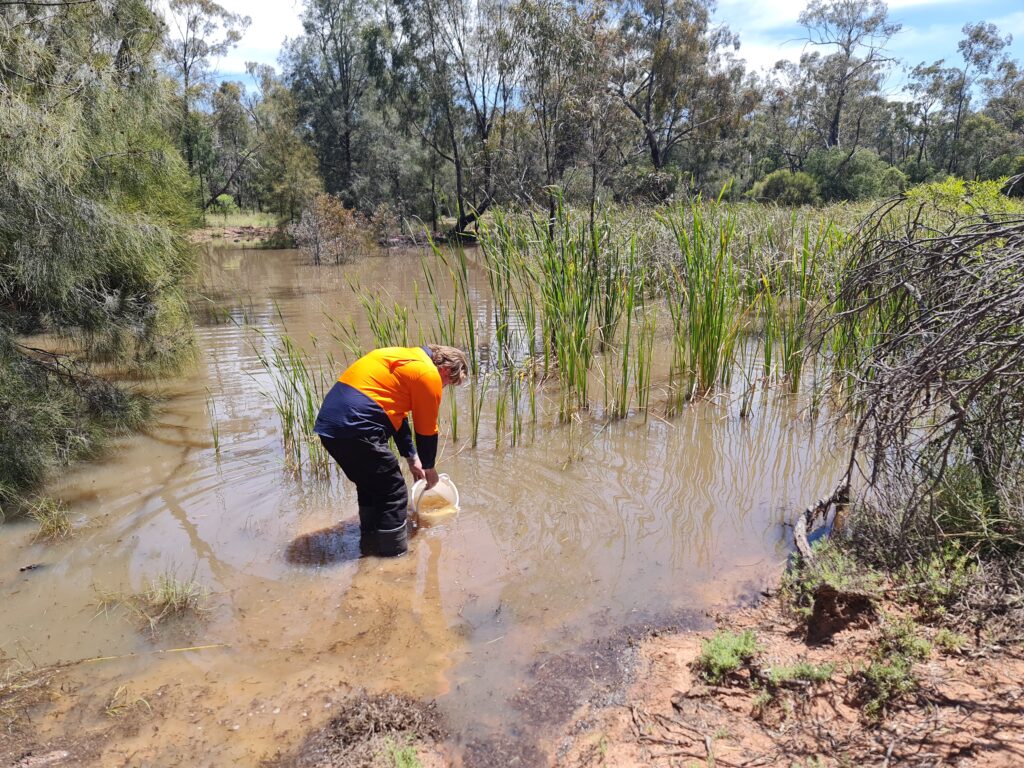Microbial degradation of chemicals used in coal seam gas activities
New research from CSIRO, Australia’s national science agency, provides fresh insights into the microbial communities in the soils and waters of the Narrabri region in New South Wales and reveals more about their important role in environmental protection and ecosystem health.
Conducted through CSIRO’s Gas Industry Social and Environmental Research Alliance (GISERA), the project gathered comprehensive baseline data and assessed the ability of microbial communities to degrade chemicals used in coal seam gas (CSG) activities.
Building on previous CSIRO studies in South Australia and the Northern Territory, the findings reinforce growing scientific confidence that microbial communities form an additional and effective defence against contamination in the unlikely event of a spill – complementing traditional operational controls.
The study involved sampling over 50 sites across the Narrabri Gas Project area in November 2022 and June 2023. This included 14 groundwater sites, 16 surface water sites, and 32 soil locations.

CSIRO scientist collecting water samples
CSIRO scientist collecting water samples in the Narrabri region
By collecting detailed baseline information about the microbes, and water and soil chemistry in the area, the research provides a foundation for ongoing environmental monitoring and impact assessment.
Another key finding was that most tested chemicals degraded completely in groundwaters, surface waters, and soils of the region. Degradation occurred more rapidly in soils than in groundwater, though some chemicals, particularly alcohol ethoxylates mixtures, persisted longer in certain environments.
Researchers identified numerous microorganisms capable of breaking down these chemicals, highlighting the role of microbial communities as a natural safeguard against potential contamination.
In a first for the region, the project also delivered critical new insights into fungal diversity in non-cropping soils and surface waters. Across the soils studied, 2,846 distinct fungal “species” were detected, representing around 270 described fungal genera.
Many of these appeared to be novel ectomycorrhizal fungi, which form symbiotic relationships with plant roots to enhance nutrient uptake and support vegetation growth in nutrient-poor soils. This process has played a key role in the resilience of the Pilliga Forest, which has remained intact while surrounding areas have been cleared for farmland.
The study also provided an in-depth look at regional microbial diversity. Groundwater samples contained nearly 6,000 prokaryotic species, while surface waters had more than 24,000 species, with an average of 5,100 per sample. Soil environments exhibited the highest biodiversity, with nearly 38,000 microbial species representing over 1,000 unique genera.
By expanding our knowledge of microbial and fungal communities, this research offers valuable insights for future environmental monitoring and impact assessments. The findings reinforce the importance of naturally occurring microbial degradation processes in maintaining soil and water health in regions of resource development.
Read the final report
Find out more about this project
Learn about other GISERA research in New South Wales
